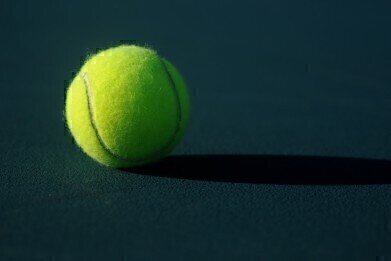News
How Long Before a Tennis Ball Loses its Bounce? And Where Does It Go?
Jul 08 2015
Things are heating up fast at Wimbledon as the world’s top tennis players take to the courts to fight it out for the most prestigious title on the planet. From Djokovic, Murray and Federer to Williams, Sharapova and Ivanovic, the top seeds will be rallying up a storm. At the heart of the action are no less than 54,000 Slazenger tennis balls, with an average of 2000 per day used throughout the two week Championship.
So why the need for so many tennis balls? As well as the fact that there are a grand total of 660 matches throughout Wimbledon, the balls also start to lose their bounce as the tournament goes on. Want to know more? Read on for an overview of when tennis balls start to lose their bounce, and where that bounce goes.
It’s all about the air
There’s nothing quite like the feel of a fresh tennis ball that’s full of bounce. This bounce is caused by air that’s pumped into the ball. As the air pushes against the inside of the ball it creates pressure. When the ball hits the ground the air trapped inside the ball is forced inwards. When the air on the inside pushes back the ball is propelled back off the ground, thus creating the bounce.
Inside air pressure > outside air pressure
Unlike other types of balls, tennis balls feature higher air pressure on the inside rather than the outside. The pressure pushing against the inside of the ball sits at around 27 pounds per square inch. In comparison, the outside air pressure creates a force of just 13.7 pounds per square inch.
Why the pressurized containers?
Ever wondered why tennis ball containers are pressurized? The reason behind the ‘pop’ you hear when opening the can is because the container has been pressurised to ensure that there is the same amount of air pushing on both the inside and the outside of the balls. This keeps them fresh and full of bounce.
When the can is opened and the balls are put into play more air starts to push on the inside of the balls. As the balls get older small amounts of air start to seep out which minimises inside pressure. This reduces the amount of air that pushes on the inside of the ball when it hits the ground, thus reducing bounce.
Science isn’t just for the laboratory and can be found in almost every aspect of our daily lives! For example, ‘Ultrafine Grinding with Laboratory Ball Mills’ explores how nanotechnology has revolutionised an array of different industries, including the development of reinforcing materials used to make state-of-the-art tennis rackets.
Digital Edition
Lab Asia 32.2 April
April 2025
Chromatography Articles - Effects of small deviations in flow rate on GPC/SEC results Mass Spectrometry & Spectroscopy Articles - Waiting for the present to catch up to the future: A bette...
View all digital editions
Events
Apr 22 2025 Hammamet, Tunisia
Apr 22 2025 Kintex, South Korea
Analytica Anacon India & IndiaLabExpo
Apr 23 2025 Mumbai, India
Apr 23 2025 Moscow, Russia
Apr 24 2025 Istanbul, Turkey



















